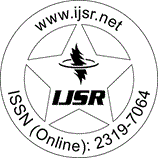Downloads: 111
India | Biomedical Sciences | Volume 14 Issue 9, September 2025 | Pages: 1092 - 1095
Limb Regeneration Potential in Humans: Lessons from Nature, Stem Cells, and Tissue Engineering
Abstract: Limb regeneration in humans remains a significant biomedical challenge, particularly for individuals who have lost limbs due to trauma or congenital conditions. While organisms such as Ambystoma mexicanum (axolotls) and Schmidtea mediterranea (planarians) can fully regenerate limbs through highly coordinated cellular and molecular processes, human tissue repair is largely limited to wound closure and, in rare cases, partial fingertip regrowth. This literature review examines the mechanisms that enable complete regeneration in animal models and evaluates emerging tissue engineering strategies with the potential to achieve similar outcomes in humans. Sources were identified through open-access databases including PubMed, ScienceDirect, and the NIH repository. In regenerative species, blastema formation driven by pluripotent and mesenchymal stem cells is central to organized tissue regrowth, guided by signaling pathways such as Wnt (a pathway regulating cell growth and development) and BMP (bone morphogenetic protein, involved in bone and cartilage formation). Translational research in humans is exploring bioengineered scaffolds, advanced biomaterials, and 3D bioprinting to replicate these regenerative conditions. However, major barriers persist, including insufficient vascularization, immune rejection of engineered tissues, and ethical considerations surrounding certain stem cell sources. Insights from highly regenerative species, combined with advances in biomaterials and regenerative medicine, may help bridge the gap between current human healing capabilities and full limb restoration. Achieving this goal will require integrated progress in biological understanding, engineering innovation, and ethical governance to address the technical and regulatory challenges that currently limit clinical translation.
Keywords: limb regeneration, stem cells, bioprinting, tissue engineering, blastema, scaffold materials
How to Cite?: Rinu Balasubramani, "Limb Regeneration Potential in Humans: Lessons from Nature, Stem Cells, and Tissue Engineering", Volume 14 Issue 9, September 2025, International Journal of Science and Research (IJSR), Pages: 1092-1095, https://www.ijsr.net/getabstract.php?paperid=SR25922223554, DOI: https://dx.doi.org/10.21275/SR25922223554
Rate This Article! View 12 Comments
